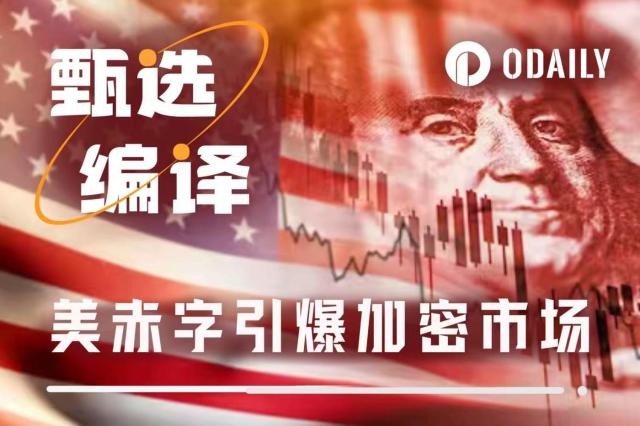Last week (July 8 - July 14), BTC reached a new high, breaking through the $120,000 mark, and the ETH spot ETF had a weekly inflow exceeding $900 million, creating a historical record. On July 10, positive policy signals catalyzed market sentiment, with BTC price rising to around $118,000. On July 14, driven by institutional funds, BTC set a new historical high, briefly reaching $123,218, with the largest weekly increase of 13.56%. Currently, BTC price has pulled back to around $117,000. ETH showed an "M" shaped upward trend last week, repeatedly breaking through $3,000, with the largest weekly increase of 22.73% (Binance spot, July 15 17:22).
Market Interpretation
BTC Breaks $123,000, Driven by Dual Factors of Policy Benefits and Safe-Haven Demand
BTC price recently reached a new high, breaking through $120,000, with a peak of $123,218, and a total market value of $2.36 trillion. The daily chart shows a clear bullish trend, with increased trading volume and active market participation. This round of increase was boosted by policy signals such as Shanghai's blockchain infrastructure promotion, warming market sentiment. Meanwhile, the US spot BTC ETF daily net inflow reached $1.176 billion, a three-month high, indicating continued institutional fund entry. Companies like MicroStrategy and Marathon Digital continue to increase BTC holdings, strengthening the "digital gold" narrative.
Globally, under tariff and inflation expectations, BTC's safe-haven demand has increased. Although blockchain applications are policy-driven, high leverage and regulatory uncertainty still exist, requiring caution about short-term adjustments and market volatility. Overall, BTC is consolidating at high levels, with subsequent focus on policy dynamics and capital flows.
Altcoin Sector Warming Up, Driven by Funds and Policy Expectations
On July 10, when BTC first broke $120,000, over 90% of the top 200 Altcoins rose, with HBAR and SUI surging 25% and 12% respectively, while mainstream coins like ETH, SOL, BNB, and XRP also strengthened simultaneously. Although BTC continues to reach new highs, overall market sentiment remains rational, with FOMO significantly weakened, and investor focus gradually shifting to the Altcoin sector.
Currently, while Altcoins are generally rebounding, the overall increase is below expectations, with ETH and BTC trends still showing significant divergence. As ETF approval expectations warm up and liquidity improves, Altcoins may welcome a catch-up rally. The true "Altcoin season" may need to wait for the Fed's rate cut, with August-September potentially being a key window.
USDT and USDC Supply Reaches New High, Signaling Market Incremental Liquidity
Recently, Tether (USDT) and Circle (USDC) supply both reached historical highs, with USDC market value growing $1.3 billion to $62.8 billion since July, and USDT increasing $1.4 billion to nearly $160 billion. As core liquidity tools in the crypto market, stablecoin expansion is typically viewed as an important signal of new capital entry. The current BTC and mainstream coin rebound is highly synchronized with continuous stablecoin total volume growth, reflecting abundant exchange funds and rising market risk appetite.
Market Highlights
《Genius Act》Passed by Senate, Stablecoin Regulation Reaches Critical Turning Point
On July 12, the US Senate passed the 《Genius Act》, drawing widespread attention from banking and legal circles. The act stipulates that stablecoin holders enjoy priority claim rights in bankruptcy, stablecoins must be 100% backed by high-liquidity assets (such as US Treasury bonds), and issuers must disclose reserves monthly and have freezing capabilities. The law aims to enhance user confidence and compliance thresholds, strengthening the connection between stablecoins and traditional finance. The current bill awaits House review, and if successfully implemented, may become a watershed moment for stablecoin compliance and industry landscape evolution.
Hong Kong and South Korea Collaborate to Advance Stablecoin Regulation, Promoting Standardization
On August 1, Hong Kong's 《Stablecoin Regulation》 will officially take effect, requiring issuers to maintain 1:1 reserves, conduct regular audits, and implement license management. South Korea is highly attentive, with both sides exploring stablecoin application scenarios pegged to currencies like Hong Kong dollar and Korean won, and proposing multilateral cooperation initiatives. Currently, Hong Kong has attracted over 40 companies applying for related licenses, and Asian regional collaboration is expected to further promote healthy digital asset market development.
Disclaimer: The above content does not constitute investment advice, sales offer, or purchase offer invitation to residents of Hong Kong Special Administrative Region, United States, Singapore, or other regions where such offers might be legally prohibited. Digital asset trading may involve significant risks and instability. Investment decisions should be made after careful consideration of personal circumstances and consultation with financial professionals. Matrixport is not responsible for any investment decisions based on the information provided in this content.




